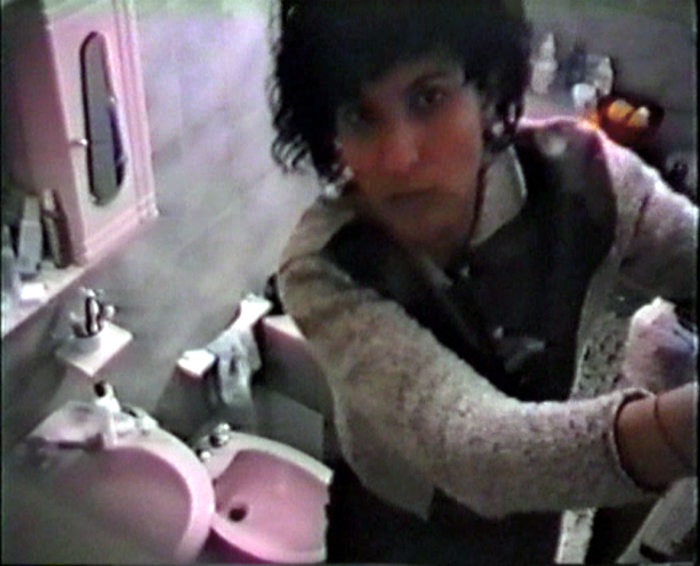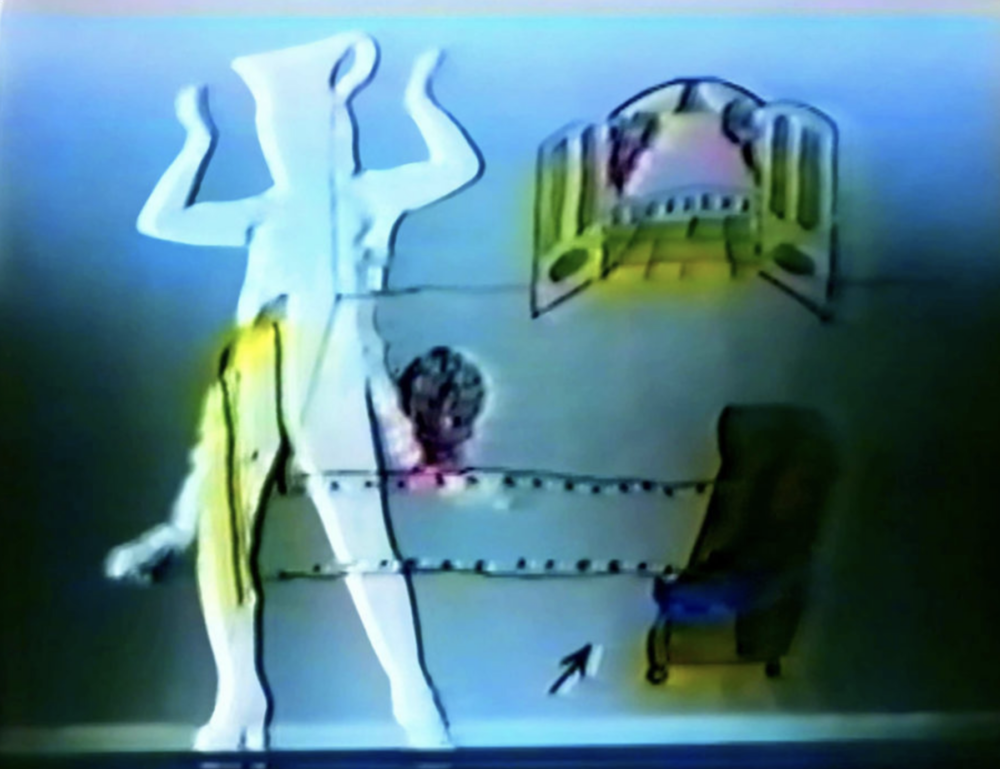
Betty Bee, Lionetti Luigi classe 1920 1997
MiniDV tape transferred on digital video, 21’48’’
Collection of Fondazione Donnaregina per le arti contemporanee – Museo Madre

Betty Bee, Gilda 1995
’16 mm and VHS tape transferred on digital video, 3’55’’
Collection of Fondazione Donnaregina per le arti contemporanee – Museo Madre
The film Lionetti Luigi classe 1920 (1997) by Betty Bee is a portrait of her father, now deceased. Physically and psychologically violent, he represented, says the artist ‘the sick part of society and my ‘sickness’’. The family patriarch was hyper controlling and also phobic in relation to sex and nudity, keeping his teenage daughter locked and bound in the house. He did not know he was being filmed in the bathroom. He did not know he was being filmed in the bathroom. His naked, aging body is observed by the voyeuristic gaze of the camera as he washes himself, and a female figure, the artist herself, helps him. The work constitutes a form of poetic revenge. The film Gilda takes its name from Charles Vidor’s 1946 film, in which Rita Hayworth portrays a femme fatale. Betty Bee uses her own dancing silhouette crowned by an amphora to represent the woman who always gives and nurtures. She creates a palimpsest of the names of the men with whom the artist has had relationships, using them for her pleasure. The painting that accompanies the video covers the artist’s silhouette with names of women who have been the subject of feminicide.